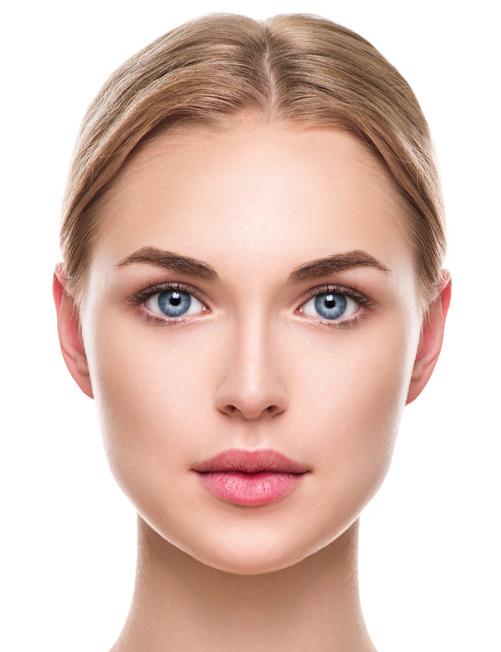@aestheticsgroup
@aestheticsjournaluk
Aesthetics
aestheticsjournal.com
A summary of the latest clinical studies Title: A Split-face Comparative Study to Evaluate the Efficacy of 50% Pyruvic Acid Against a Mixture of Glycolic and Salicylic Acids in the Treatment of Acne Vulgaris Authors: Zdrada J, et al. Published: Journal of Cosmetic Dermatology, January 2020 Keywords: acne vulgaris, alpha hydroxy acids, moisturising, salicylic acid, sebum Abstract: One of the ways to treat acne is by using chemical peels. Salicylic, glycolic and pyruvic acids due to their keratolytic and antibacterial properties are often recommended for acne patients. The aim of the study was to compare the effect of a preparation containing glycolic and salicylic acids with pyruvic acid. 14 women diagnosed with acne took part in the study. The facial treatment area was divided into two parts: right (a preparation containing 50% pyruvic acid) and left side (a preparation containing glycolic and salicylic acids.) Skin parameters, namely hydration, sebum secretion and skin colour were measured. As a result of using 50% pyruvic acid, the hydration of the right side of the face increased statistically and there was a decrease in the amount of melanin in the epidermis. On the left side of the face, there was an increase in skin hydration after using a mixture of glycolic and salicylic acids. Chemical peels affect a wide range of pathological factors of acne. A mixture of acids yields fewer side effects than a single acid used in high concentration, but the therapeutic effects are comparable.
Title: Vasculitis Beyond the Areas of Botulinum Toxin-A Injection, Increasing Concerns? Authors: Namazi N and Najar Nobari N Published: Journal of Cosmetic Dermatology, January 2020 Keywords: botulinum toxin-A, vasculitis, injectables Abstract: Botulinum toxins-A, as the most common nonsurgical method for facial rejuvenation, have been used broadly. Despite its significant aesthetic aspects, particular undesirable adverse effects could occur. The aim of this case report is to present the most serious side effects of botulinum toxin injections. This is a case report of a middle age woman with side effects of botulinum toxin injection with presentation of erythema and edema on the sites of injection and more further on the face and neck. On the skin biopsy the small vessel vasculitis on the site on injection and more further on the face and neck was performed as a result of injections. Following Botulinum toxin-A injection, various cutaneous reactions could occur. Some of these reactions such as edema and erythema may be self-limited and has no serious impact on patients’ life but also some severe reactions like this case may occur which may alarm the life threatening side effects of injections. Using the unapproved Botulinum toxin-A should be discouraged due to their hazard of systemic reactions and clinicians should avoid administering the unlicensed products even by patients’ request or lack of the allergic reactions from previous injections.
Title: Fat Grafting to Improve Results of Facelift: Systematic Review of Safety and Effectiveness of Current Treatment Paradigms Authors: Molina-Burbano, et al. Published: Aesthetic Surgery Journal, January 2020 Keywords: facelift, surgery, fat-grafting, lipofilling Abstract: Autologous fat grafting is a helpful supplement to facelift surgery that helps to combat age-related volume loss of facial structures. Despite the widespread prevalence of combined facelift and fat-grafting, there exists significant procedural variation between providers. The primary purpose of this systematic review is to study the efficacy and complication rates of facelift with lipofilling compared with facelift alone. A systematic review of the Cochrane Library and MEDLINE databases as completed to identify all clinical reports of fat grafting combined with facelift surgery using the following key terms: (‘fat grafting’ OR ‘lipotransfer’ OR ‘lipofilling’ OR ‘fat transfer’) AND (‘facelift’ OR ‘rhytidectomy’ OR ‘SMASectomy’ OR ‘facial rejuvenation’). Data on techniques, outcomes, complications, and patient satisfaction were collected. The most common locations of fat graft injection included the nasolabial folds, tear troughs, temporal regions, midface/cheek/malar eminence, marionette groove, lips, and ear lobes. The addition of fat grafting to facelift surgery resulted in significant improvement in facial volume and aesthetic assessments. Combined facelift and fat grafting is a safe and efficacious means to simultaneously address agerelated ptosis and volume loss. Further research is required to validate and improve existing treatment modalities.
Title: Topical Stabilized Hypochlorous Acid: The Future Gold Standard for Wound Care and Scar Management in Dermatologic and Plastic Surgery Procedures Authors: Gold MH, et al. Published: Journal of Cosmetic Dermatology, January 2020 Keywords: hypertrophic scars, keloid scars, scar management, stabilised hypochlorous acid, wound care Abstract: Hypochlorous acid (HOCl), a naturally occurring molecule produced by the immune system, is highly active against bacterial, viral, and fungal microorganisms. Moreover, HOCl is active against biofilm and increases oxygenation of the wound site to improve healing. Natural HOCl is unstable; through technology, it can be stabilized into an effective topical antiseptic agent. This paper focuses on the use of topical stabilized HOCl in wound and scar management for pre-, peri-, and post-procedures – including its ability to reduce the occurrence hypertrophic scars and keloids. The role of the product in other skin conditions is beyond the scope of this article. A panel comprising clinicians with experience in cosmetic and surgical procedures met late 2018 to discuss literature search results and their own current clinical experience regarding topical stabilized HOCl. Topical stabilized HOCl provides an optimal wound healing environment and, when combined with silicone, may be ideal for reducing scarring. For wound care and scar management, topical stabilized HOCl conveys powerful microbicidal and antibiofilm properties, in addition to potency as a topical wound healing agent. It may offer physicians an alternative to other less desirable wound care measures.
Reproduced from Aesthetics | Volume 7/Issue 3 - February 2020













